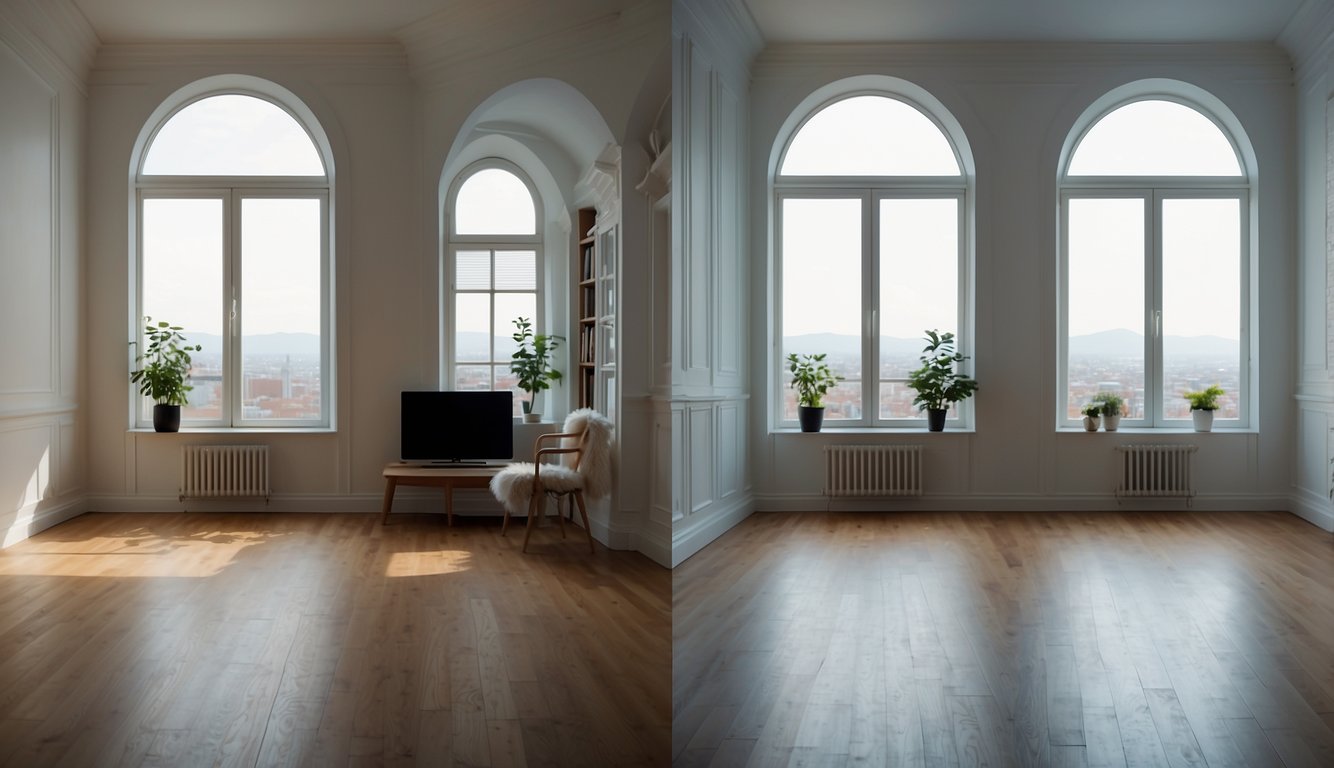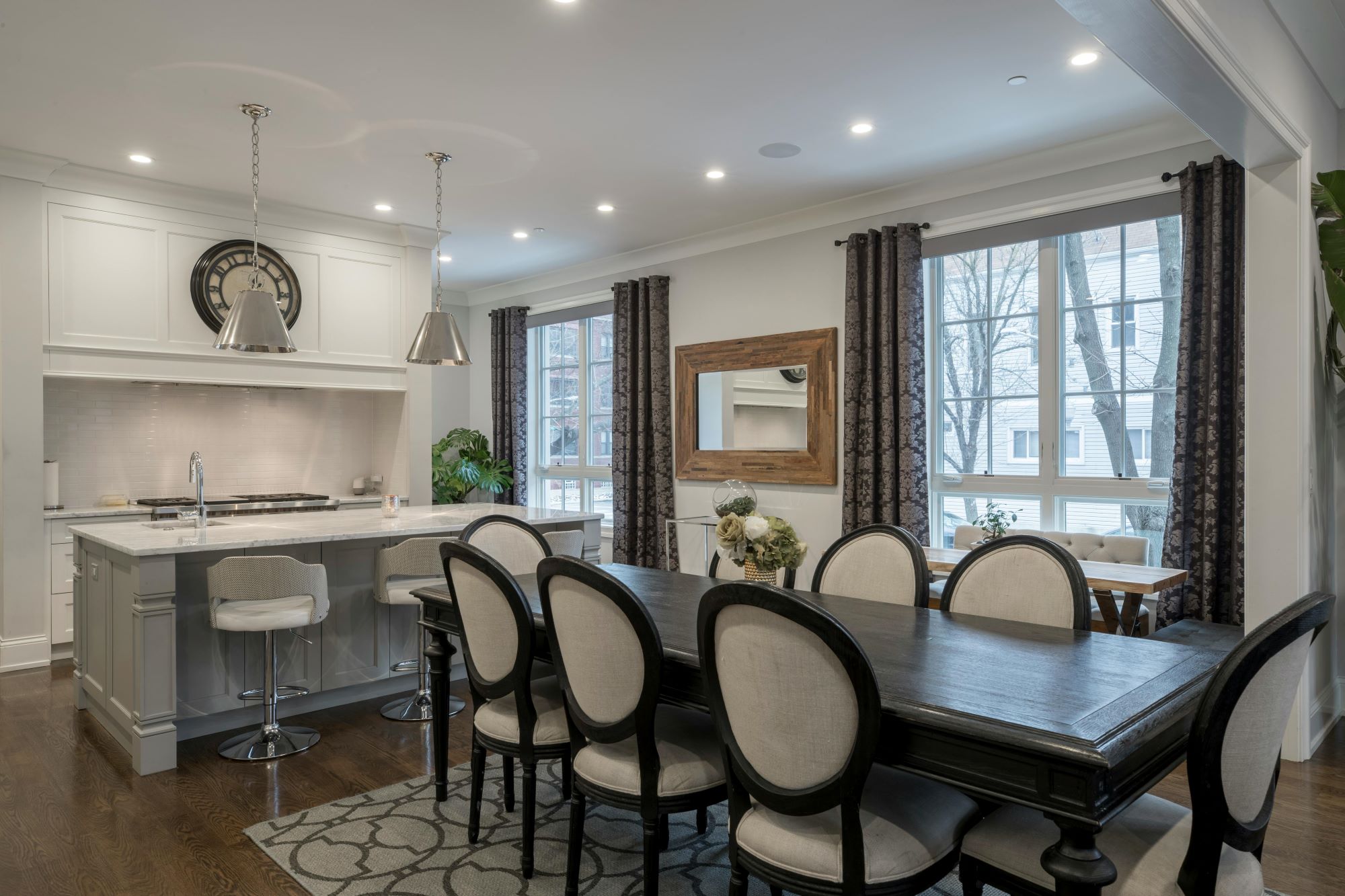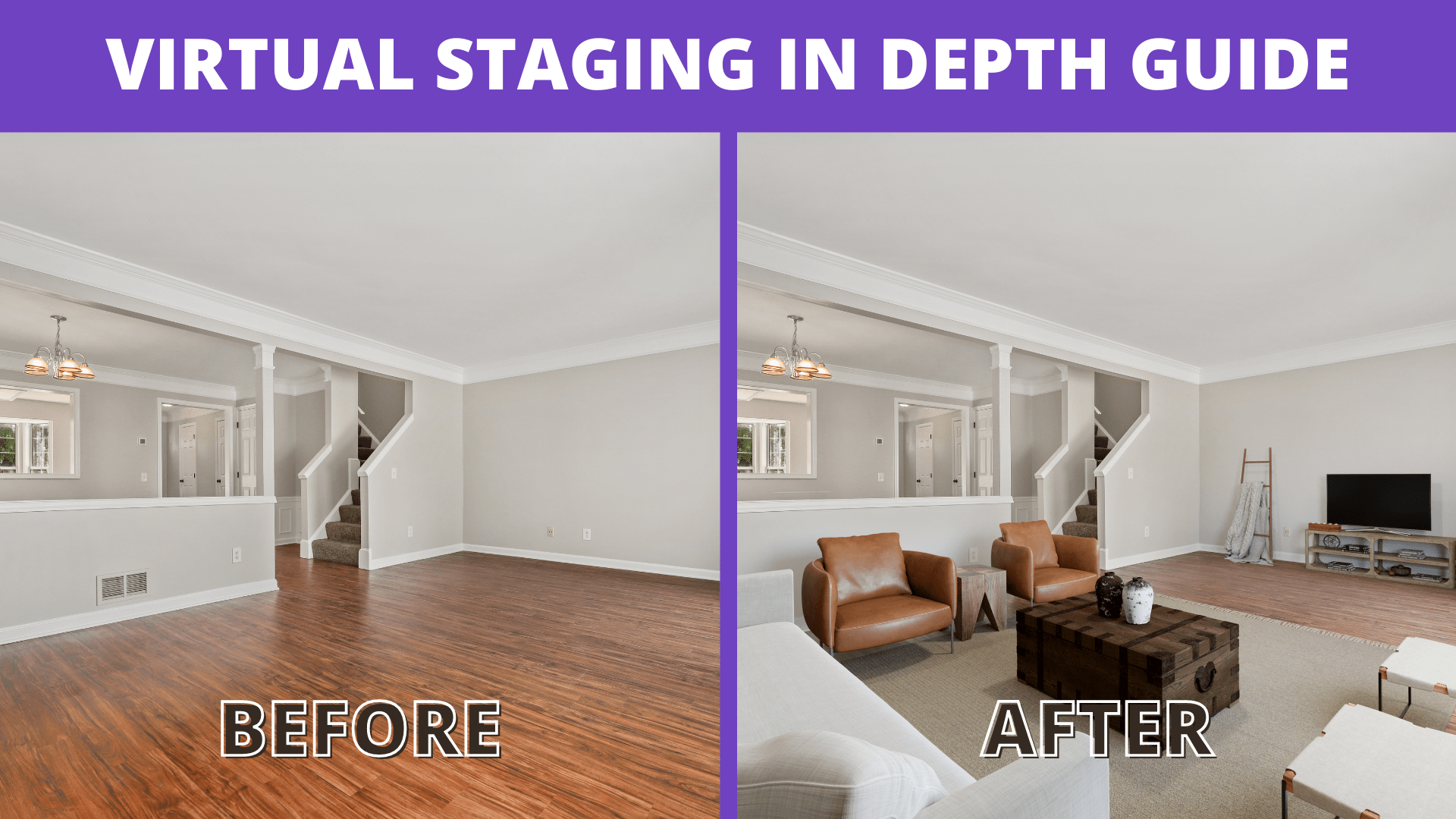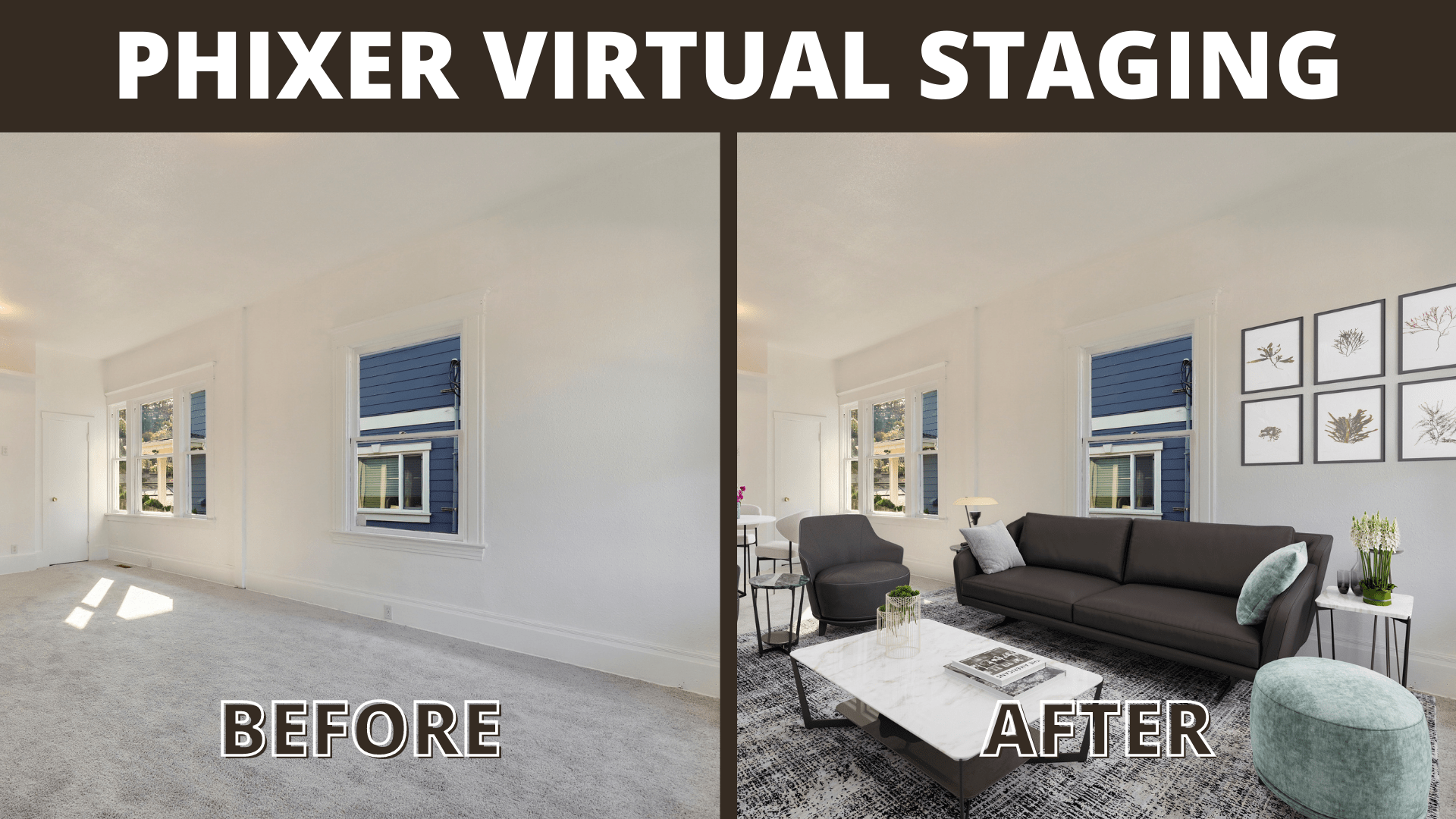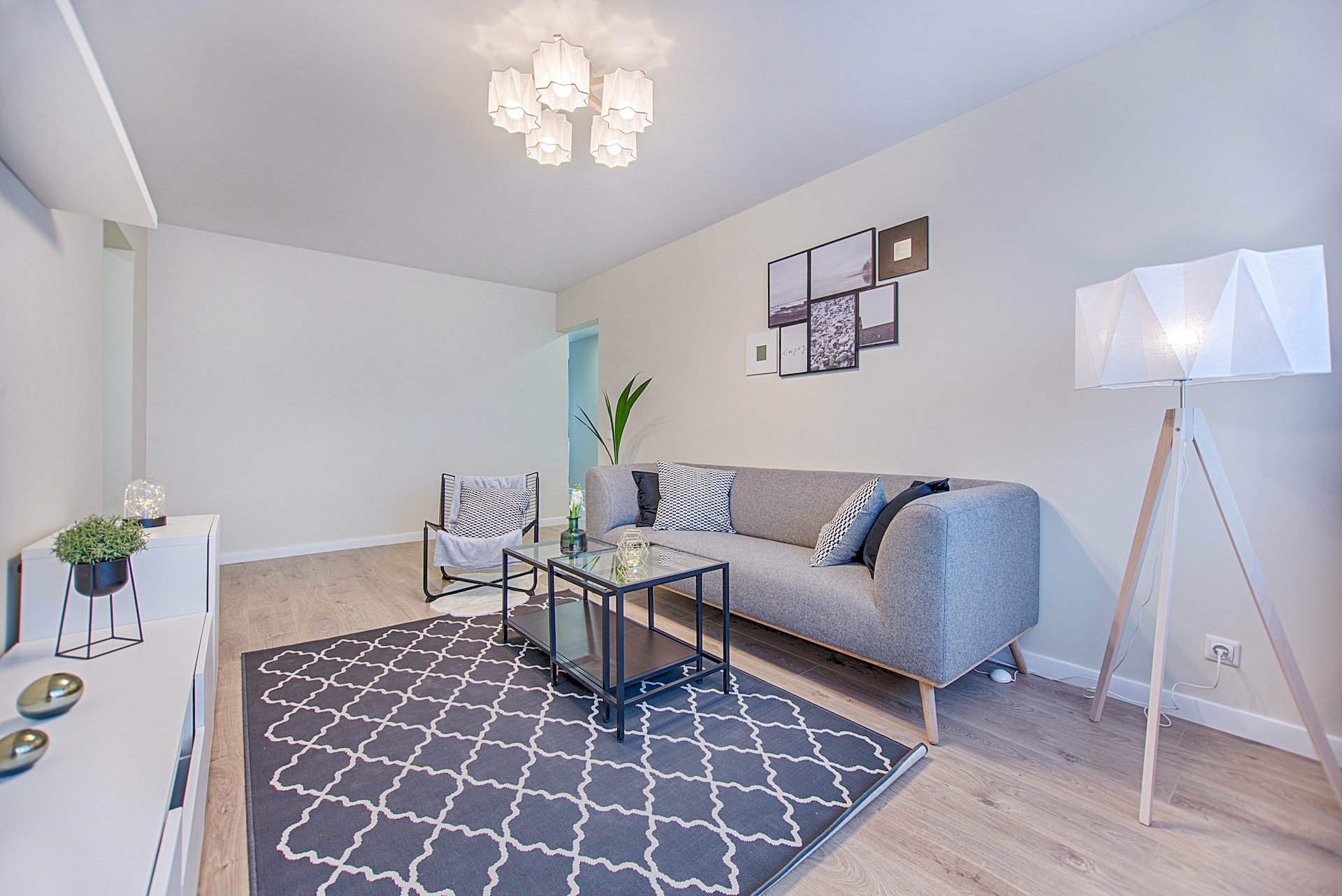In today’s competitive real estate market, sellers are continually looking for effective ways to present their homes in the best possible light to potential buyers.
Virtual staging has emerged as a powerful tool in this regard, allowing you to digitally furnish and decorate your property to enhance its appeal.
Unlike traditional home staging, which requires physical furniture and decor, virtual staging employs software to create inviting and realistic images of an interior, potentially saving time and money.

The effectiveness of virtual staging lies in its ability to help buyers visualize themselves living in the space, making it easier for them to connect emotionally to the property.
It can be particularly useful for selling empty or cluttered homes where physical staging might be impractical or too expensive.
By showcasing a home’s potential through professionally designed virtual interiors, you may increase the likelihood of attracting more offers and selling your home faster.
Key Takeaways
- Virtual staging is a digital alternative to traditional home staging, offering a cost-effective way to enhance a property’s appeal.
- By creating realistic images of furnished interiors, virtual staging can help potential buyers visualize a home’s potential.
- Employing virtual staging can assist in selling a property quicker and often leads to a more emotional connection from buyers.
Understanding Virtual Staging

When you’re considering selling your property, staging can be a pivotal factor in attracting potential buyers.
Virtual staging presents a cost-effective and flexible alternative to traditional staging, utilizing technology to enhance the appearance of your home digitally.
Virtual Staging vs. Traditional Staging
Virtual staging allows you to furnish an empty space or reconfigure an existing room with digital furniture and decor, offering a glimpse into the potential of a home without the hefty price tag of traditional staging.
Traditional staging requires renting physical furniture and accessories, which involves more effort and expense.
The Technology Behind Virtual Staging
Advanced software is the cornerstone of virtual staging, enabling designers to create realistic, furnished interiors from photographs of empty rooms.
This technology makes use of 3D modeling and photo-editing tools to meticulously place digital furniture into the images, creating a welcoming and aesthetically pleasing environment.
Types of Virtual Staging Services
Numerous virtual staging services cater to varied needs, from residential to commercial spaces.
Some services specialize in modern designs, while others might offer a range of styles from contemporary to traditional.
Providers commonly deliver several design options for a room, giving you flexibility in presenting your space to prospective buyers.
Selecting the right style and provider can significantly impact your property’s marketability.
The Benefits of Virtual Staging

Virtual staging offers you a range of advantages to effectively showcase your home in the best light without the heavy investment traditionally associated with physical staging.
From financial savings to aesthetic flexibility, let’s explore the specific benefits it can provide.
Why Would You Virtually Stage a Property?
Virtual staging is the process of digitally enhancing images of a property to make it more appealing to potential buyers. There are several reasons why virtual staging can be a valuable tool when trying to sell a home. One of the main pros of virtual staging is the cost – it is typically much more affordable than physically staging a home. In addition, virtual staging allows for more flexibility and creativity in showcasing the potential of a space, especially if a home for sale is vacant. On the other hand, some cons of virtual staging include the fact that it doesn’t have the same impact as real staging and can sometimes be perceived as misleading. However, when done properly, virtual staging can still significantly improve the presentation of a property in real estate photography.
Staging has become an essential way to sell a property in today’s competitive market. While real staging involves physically decorating and arranging a staged home to showcase its potential, virtual staging is the process of digitally adding furniture and decor to a staged room in real estate photography. When considering the pros and cons of virtual staging, it is important to weigh the benefits of cost and flexibility against the potential drawbacks of authenticity and impact. Ultimately, whether virtual staging is worth it depends on the specific property and the target market.
Cost-Effectiveness and Budget Considerations
Virtual staging is a cost-effective solution for selling your home.
Traditional staging has its costs, from renting furniture to employing a decorator.
In contrast, virtual staging can save you thousands, with services ranging from $39 to $199 per room.
This affordability allows you to allocate more of your budget to other aspects of selling your home.
Appeal to Potential Buyers
One significant advantage is the enhanced appeal virtual staging brings to your online listings.
By presenting a furnished and styled property, potential buyers can better visualize themselves in the space, making your listing stand out.
High-quality, virtually-staged photos can result in your home spending less time on the market, tapping into the buyers’ aspirations with impressive, yet realistic imagery.
Convenience and Time Savings
Virtual staging is not only affordable but also fast and convenient.
Unlike physical staging, which requires transport, setup, and dismantling, the virtual process is done digitally, drastically reducing the turnaround time.
This means you can have your home staged and listed in a matter of hours or days, which is ideal if you’re looking to sell quickly.
Flexibility and Range of Design Choices
With virtual staging, the design possibilities are nearly endless, offering you incredible flexibility.
Customize each room according to the most recent trends or tailor it to a specific buyer demographic, all without physically altering your space.
Virtual staging allows for numerous revisions and an array of design styles, helping prospective buyers envisage their own furniture and decor in the home.
Preparing a Property for Virtual Staging

When you’re ready to employ virtual staging for selling your house, there are essential steps you must undertake to ensure that your property is depicted in the best light possible online.
Photography Requirements for Virtual Staging
High-resolution photos are the foundation of virtual staging.
To create the most engaging and realistic staged images, you need to provide professional-quality photographs that capture the true essence of each room.
It’s important to use a camera capable of producing high-resolution images and consider lighting conditions to avoid glares or shadows that could detract from the space’s potential.
An empty space serves as a clean canvas for virtual staging experts to work their magic, so ensure the property is vacant before taking photos.
Decluttering and Optimizing Space
Decluttering is a critical step before photographing your property.
A tidy and optimized space makes a significant difference in virtual staging.
You should remove personal items, unnecessary furniture, and any clutter that disrupts the flow of the space.
The aim is to present a harmonious, decluttered environment that allows potential buyers to visualize themselves in the home. This step helps virtual staging companies to effectively incorporate desirable furnishings and decor into your listing photos.
Selecting the Right Virtual Staging Company
Choosing a reputable virtual staging company is key to a successful digital presentation of your property.
Look for companies that showcase an extensive portfolio of their work and provide clear pricing structures. Quality and turnaround time are also important factors to consider.
You want a company that promises realistic staging results—ones that accentuate your home’s strengths and appeal to potential buyers’ taste and lifestyle preferences.
Ensure that they can deliver images that blend well with the original photography, preserving angles and lighting for a seamless finish.
Virtual Staging in the Selling Process

Virtual staging has revolutionized the way you can present homes in the real estate market, making it an integral component of the selling process. This approach allows for an efficient and versatile way to showcase a property’s potential.
Integrating Virtual Staging with Real Estate Listings
When integrating virtual staging into your real estate listings, you provide potential buyers with a clearer vision of an otherwise empty space.
The process involves inserting furniture, decor, and fixtures into listing photos of an empty room.
This digital enhancement is not just about filling space—it’s about creating a lifestyle that buyers can envision themselves living in.
Real estate agents readily adopt this tactic as it can significantly sell faster, offering a visually appealing online presence without the higher costs associated with traditional staging.
Enhancing Online Presence
In today’s digital age, your online listing is often the first, and possibly the only, opportunity to catch a buyer’s eye.
High-quality, virtually staged photos stand out in online searches, leading to more clicks and inquiries.
They complement the property description, giving life to the listing and enabling potential buyers to imagine their future home.
For you, the realtor, this means a more marketable listing that can attract a broader audience.
The Impact of Virtual Staging on Sales
The effectiveness of virtual staging in the sales process is measurable.
Properties that are virtually staged not only tend to sell faster but often command a higher asking price.
By leveraging the power of professionally styled listing photos, you are likely to garner more interest, leading to a quicker sale.
The initial investment in virtual staging can be easily offset by the returns of a successful sale, making it a strategic choice in today’s competitive market.
Ethical Considerations and Best Practices

When delving into virtual staging to sell a house, your integrity and the trust of potential homebuyers are paramount.
Ethical considerations and best practices focus on transparency, setting realistic expectations, and adhering to legal standards.
These principles ensure that while you are showcasing the property’s potential, you are also upholding your responsibility to provide a truthful representation of the home.
Transparency with Virtually Staged Photos
Be Transparent: Always disclose that photos have been virtually staged. This allows buyers to differentiate between the actual condition of the property and enhancements made for marketing purposes.
Visual Labels: Consider using subtle but clear labels or disclaimers on virtually staged photos to maintain transparency.
Setting Realistic Expectations for Buyers
Accurate Representation: Ensure that any virtual modifications, such as furniture and decor, are within reason. This prevents misleading your audience about the space’s actual size and potential.
Virtual vs. Physical: Contrast staged images with current photos of the home. This gives buyers a clear understanding of its present state versus the potential after purchase.
Navigating Legal and Ethical Boundaries
MLS Compliance: Familiarize yourself with and follow all Multiple Listing Service (MLS) rules related to virtual staging to avoid any legal repercussions.
Ethical Marketing: Engage in ethical marketing by keeping the alterations minimal. This holds especially true for the property’s inherent characteristics like layout and views.
Frequently Asked Questions

Virtual staging is increasingly popular in the real estate industry due to its convenience and cost-effectiveness. Consider these specifics to gain a better understanding of its role in home sales.
What are the advantages of virtual staging over traditional staging?
Virtual staging offers a cost-effective alternative to traditional staging. Services such as quick and affordable solutions. It removes the need for physical furniture and can be completed quickly, without the need for physical access to the property.
Do homebuyers generally appreciate virtual staging when viewing properties?
Yes, many homebuyers find virtual staging helpful as it can enhance the visual appeal of a property by showing its potential. Virtual staging allows buyers to imagine themselves in the space more easily.
What are the potential downsides to using virtual staging for selling a home?
The major downside is the possibility of misleading potential buyers if the virtual staging does not accurately represent the space. It may lead to disappointment upon seeing the property in person. Additionally, lack of disclosure that images have been virtually staged can result in trust issues.
Can virtual staging significantly impact the sale price of a house?
While virtual staging itself may not directly increase a home’s sale price, it can attract more buyers by showcasing a property’s potential. This leads to quicker sales which can indirectly positively influence the sale price due to higher demand.
How can someone identify if a property has been virtually staged?
Listings should indicate when photos have been virtually staged. You might notice that the digitally added furniture and decor look a bit too perfect or don’t cast shadows realistically, indicating a virtual modification.
What are the best practices for implementing virtual staging effectively?
To use virtual staging effectively, ensure that the staged images reflect a realistic interpretation of the space.
Choose designs that align with the property’s layout and appeal to a broad audience without being overly specific.
Transparently indicate the use of virtual staging in your listings.
What Are the Pitfalls to Avoid in Virtual Staging?
Virtual staging has become a popular alternative to real staging in the real estate industry. While virtual home staging can save time and money, there are pitfalls to avoid. One major drawback is the virtual staging cost, as digital staging software and services can be expensive. Another issue is that virtual staging may not accurately reflect the staging process and the actual look and feel of the property in real life. In some cases, virtual staging doesn’t showcase the potential of a home as well as real staging would. This is especially true for vacant homes and living in the home scenarios. It’s important to consider the profile of home staging when deciding if virtual staging is worth it for selling the home.
Virtual staging also has its limitations when it comes to creating a home office or showcasing the majority of real estate photos online. While virtual staging can enhance the appearance of a home, it may not provide a complete picture of what the home could look like to potential buyers. Additionally, the costs of virtual staging can add up quickly, especially if multiple rooms need to be staged. When comparing the pros and cons of virtual staging vs real staging, it’s important to weigh the benefits of each and determine which option is best for your specific needs.



![Why Virtual Staging Saves Time and Money [Infographic]](https://blog.phixer.net/wp-content/uploads/2024/08/virtual-real-estate-staging-before-and-after-phixer.png)
